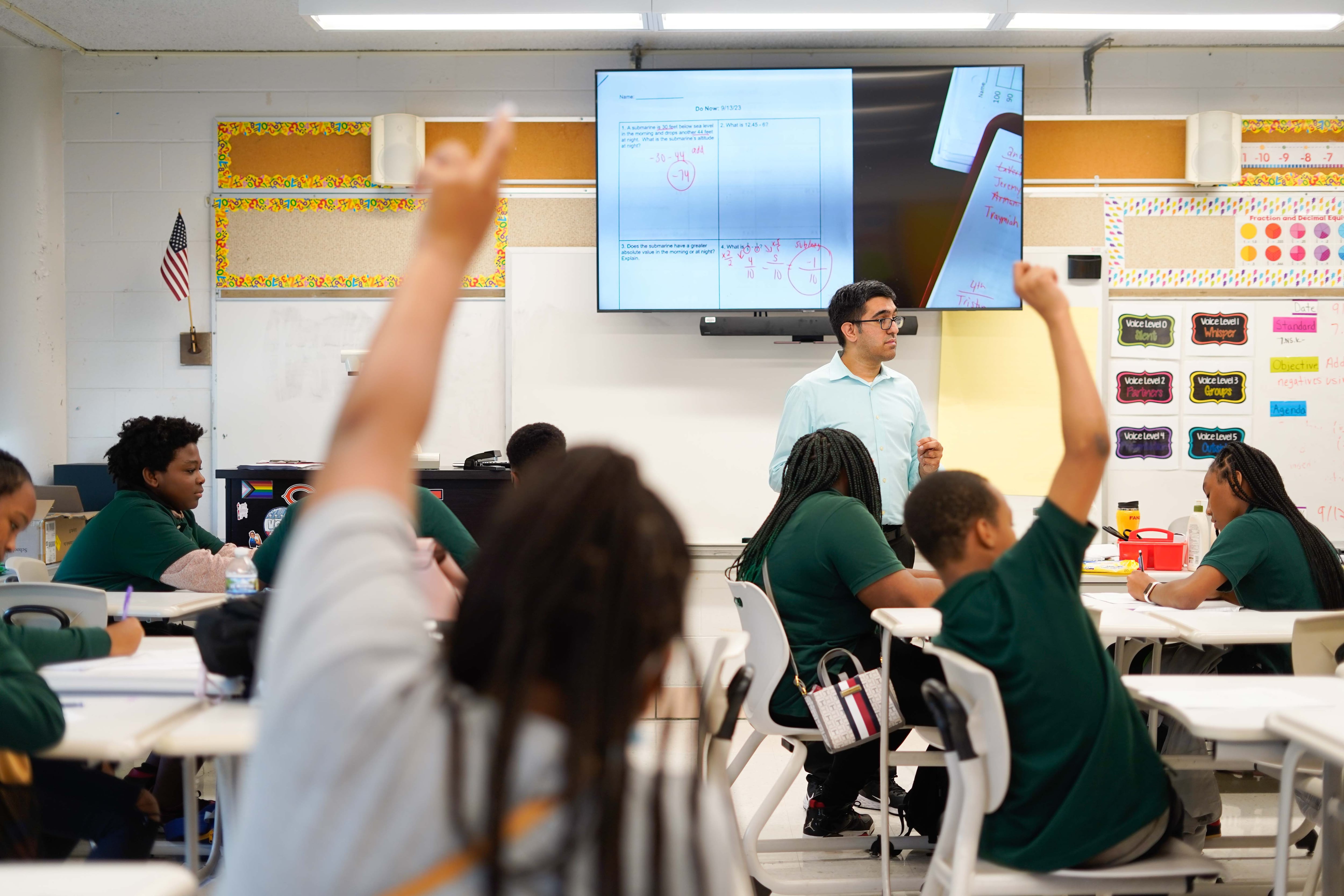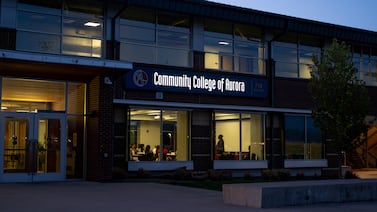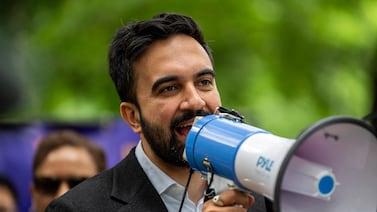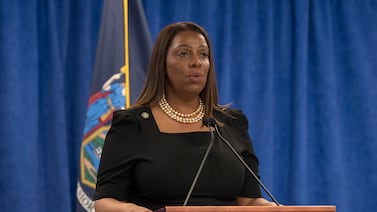As trick-or-treating got underway Tuesday night, Illinois lawmakers released a new draft map for Chicago’s soon-to-be-elected Board of Education.
It’s their third attempt at drawing districts future school board members will represent.
The new map has seven majority Black districts, six where Latinos make up 50% or more of the population, and five where the population is 50% or more white. Two districts — one representing Rogers Park on the North Side and the other representing Portage Park and Old Irving Park on the North West side — are plurality white, with Latinos making up the second-largest population.
Chicago’s Board of Education holds significant power over public schools. School board members approve the district’s annual multi-billion dollar budget, determine how schools are measured and held accountable, authorize contracts with third parties to bus students to and from school, clean classrooms and hallways, and even operate entire schools under charter agreements.
The board has been appointed by the mayor since 1995, when the state legislature gave control of Chicago Public Schools to then-Mayor Richard M. Daley. After former Mayor Rahm Emanuel closed 50 public schools in 2013, community organizations and the Chicago Teachers Union began fighting for an elected school board.
Valerie Leonard, with the Illinois African Americans for Equitable Redistricting, said under mayoral control, school board members were perceived to be not connected to the community.
“People felt — and I was one of them — like they were out of touch with what the community wanted, and they were only responsive to what the mayor wanted,” Leonard said. “It matters to have someone [on the school board] from your community who understands what people in your community are experiencing.”
After many years of advocacy and lobbying, Illinois Gov. J.B. Pritzker signed a law in 2021 to create a 21-member elected school board with phased-in elections.
Under state law, Chicagoans will elect 10 school board members from 10 districts in November 2024. The mayor will appoint 10 members from those same districts, and will also appoint a school board president. A 21-member hybrid board will be sworn in January 2025.
Then in November 2026, the 10 appointed members and school board president will be up for election, while the 10 elected in 2024 will continue serving their four-year terms. Going forward, all members will serve four-year terms and elections will be staggered, with half of the seats up for election every two years.
However, the law does not spell out how the map will move from 10 to 20 districts. Lawmakers continue to draw a map with 20 districts and have not made clear how they plan to divide the city into 10 districts for the 2024 election.
Sen. Robert Martwick, a Democrat representing the North West side of Chicago and west suburbs, said that figuring out how to create 10 districts for the 2024 elections and 20 districts for the 2026 elections has been difficult for legislators.
“The original idea was that we would draw ten districts and then after the election we would split them into 20 districts,” Martwick said. “Another variation on that would be to draw 20 districts and combine them for the purposes of the first election. The idea there was that everyone in the city of Chicago would get to pass a vote on this new elected school board.”
State Rep. Ann Williams, who represents parts of the city’s North Side and chairs a special task force of House Democrats working on drawing school board districts, said the transition from 10 districts to 20 is “still under discussion,” but the goal is to vote on a map during next week’s veto session.
“At some point we have to get a map so that people can start looking at the districts and prepare to run for office,” Williams said.
“No map is ever going to be perfect. No map is ever going to make every single person happy,” she added. “But we really truly felt like this is the product that most incorporated the feedback that we got from the communities during all those hearings.”
Chicago Mayor Brandon Johnson has been a longtime supporter of an elected school board. But when asked through a spokesperson Wednesday if he supported the latest draft or would weigh in on how school board districts are drawn, the spokesperson wrote back: No comment.
Lawmakers were supposed to draw a map of Chicago school board districts by July 1, 2023, but extended the deadline to April 1, 2024 after pushback from the public for not drawing districts that would be reflective of student enrollment.
That’s a difficult task in a city whose population does not mirror the public school enrollment. Chicago’s population is 33% white, 29% Latino, 29% Black, and 7% Asian, but the school district’s student population is 47% Latino, 36% Black, 11% white, and 4% Asian American.
School board seats are non-partisan so there will be no primary. According to the Chicago Board of Elections calendar, the first day candidates running for nonpartisan school board seats can circulate nominating petitions is March 26, 2024. They must collect 250 signatures from voters in their districts by June 24, 2024, in order to be on the ballot.
Last week, Martwick and state Rep. Kam Buckner, a Democrat, put forward a proposal that would also allow school board members to be compensated.
Mixed reactions to new draft map roll in
Legislators held two public hearings last month to gather additional feedback on their proposed school board districts. On Wednesday, several of the groups who have repeatedly testified and submitted public comment on previous maps reacted to the latest iteration.
Kids First Chicago, a nonprofit education advocacy organization that supports Black and Latino families and has an Elected School Board Task Force, called the latest proposal “more trick than treat.” The group took lawmakers to task for dropping a new draft map on Halloween when “most Chicago families were out celebrating with their children.”
Hal Woods, director of policy for Kids First Chicago, said the map continues to give white Chicagoans “substantial voting power” over a school district that serves just over 10% white students. He said parents see “more work that could be done.”
“Even with redlining, even with segregation, even with discriminatory housing policies that have forced many Chicago neighborhoods to be segregated … we have put forward prototypes that even with those historical inequities still adhere to all relevant election law,” Woods said.
A group of parents and data advocates called The FOIA Bakery released an analysis of the third draft map that looks at the proposed districts through the lens of the 2023 municipal election results. They say only seven districts in the new draft map would have elected a “minority-preferred candidate.”
But others say the new draft districts are much better than previous versions.
Jeff Fielder, executive director of the Chicago Republican Party, previously raised concerns about gerrymandering and argued for an independent commission to draw the maps. He said the third draft is better than the previous two because it has less gerrymandering.
“I’m sure there’s going to be lawsuits as it is but of their efforts, this is probably the best one,” Fielder said.
Cassie Creswell, executive director of Illinois Families for Public Schools, said she’s mostly concerned about not having a map solidified yet.
“The shorter the time between a final map and next year’s election, the worse it is for genuinely grassroots candidates who are trying to decide whether or not to run and then mustering the resources to do so,” Creswell said.
Political consultant Eli Brottman said the new map is “1,000 times better” and called six solid Latino districts a “huge win for our schools and our kids.” He said it took him multiple attempts to draw a map that would have six Latino majority districts.
Brottman said he suspects the lawmakers’ latest draft map has a “significant chance” of passing next week. Whenever that happens, he encourages people to get up to speed on what district they live in and who is running.
“Whoever we elect in these first couple rounds, helps to set a precedent for the future,” Brottman said.
Leonard, whose group Illinois African Americans for Equitable Redistricting put out a 10-district map that tries to align school board districts with City Council wards, said lawmakers are getting closer with this latest iteration. But they need to figure out how their 20 districts become 10 for the 2024 elections, she said.
Corrina Demma, an organizer with Educators for Excellence Chicago that supports the map Leonard’s group proposed, raised concerns that lawmakers could propose residents in only 10 of the 20 districts would vote in 2024, meaning “only half of Chicago will have the privilege to vote … while the other half will lack a voice.”
“We need Illinois lawmakers to get the maps right, for the sake of the 323,000 students that are depending on it,” Demma said.
Samantha Smylie contributed reporting.
Becky Vevea is the bureau chief for Chalkbeat Chicago. Contact Becky at bvevea@chalkbeat.org.






